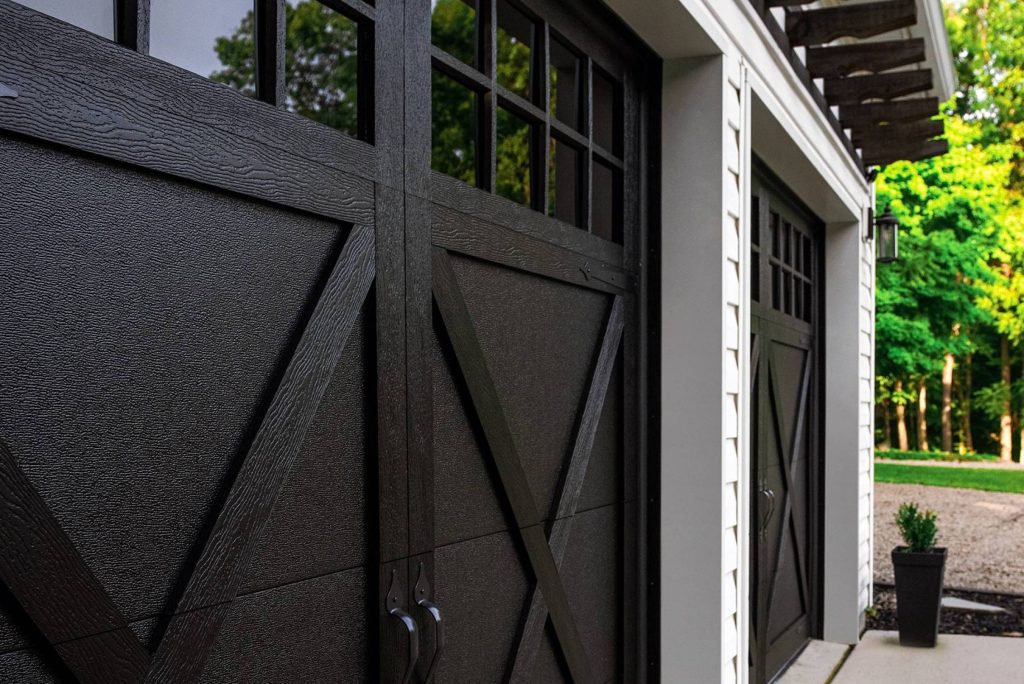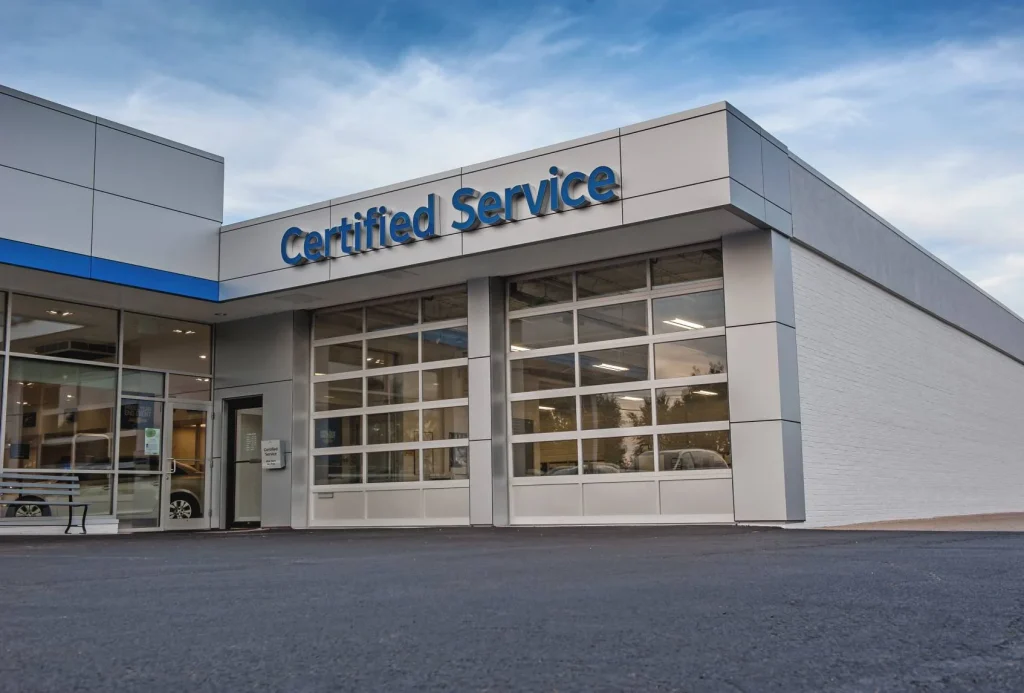Broken Garage Door in Garden City, MI
Reliable Solutions for a Safe and Secure Entry
Locally Based, Regionally Trusted
Since 2017
Schedule A Service Request
We Serve Businesses In And Around The Following Cities:
About Broken Garage Doors
Broken Garage Door in Garden City Commercial Properties
In the bustling community of Garden City, the smooth operation of commercial properties hinges significantly on the reliability of essential infrastructure. A crucial component of this setup is the garage door, which facilitates seamless logistics and security across numerous businesses. Understanding the intricacies of maintaining and repairing a broken garage door is essential for business owners aiming to optimize their property management strategies. This comprehensive guide delves into the facets of dealing with a broken garage door in Garden City, offering insights into processes, benefits, and practical applications.
Understanding the Impact of a Broken Garage Door
For commercial properties, a broken garage door can pose significant operational challenges. It is not merely a matter of inconvenience; a malfunctioning door can lead to security breaches, disrupted workflows, and potential financial losses due to halted operations. Imagine a logistics hub where timely loading and unloading are crucial; a breakdown could ripple through the supply chain. Therefore, swiftly addressing issues such as a broken garage door cable or a malfunctioning opener spring is vital.
The primary function of a garage door often encompasses both security and accessibility. Without it, businesses are left vulnerable to unauthorized access, potentially compromising the safety of goods and the integrity of the property. In Garden City, where commerce thrives and competition is stiff, ensuring minimal downtime due to garage door repair is crucial to maintaining a competitive edge.
Common Issues with Commercial Garage Doors
Commercial garage doors are subject to wear and tear due to their frequent usage. Common issues include broken cables, door misalignment, and the ubiquitous problem of a garage door spring broken. Each issue has its unique symptoms and implications. A broken cable, for instance, might result in uneven door movement, while a broken spring often prevents the door from operating altogether. Understanding these problems helps in quick identification, which is vital to minimizing disruption.
The cost to fix a broken garage door spring varies, influenced by factors such as the door's size and the spring type. Repairing broken springs is particularly crucial as they counterbalance the door's weight, enabling smooth opening and closing. Ignoring them can lead to further damage and increased repair costs. Garden City's commercial property owners need to be aware of the garage door repair cost associated with broken springs to budget effectively and avoid unexpected financial strains.
Benefits of Professional Repair Services
Engaging professional repair services in Garden City has numerous benefits, notably expertise and reliability. Companies like D&J Contracting offer specialized knowledge in dealing with a wide array of issues related to broken garage doors. Their proficiency ensures that repairs enhance both functionality and longevity. Professional services also provide warranties, giving business owners peace of mind that their investment is protected.
Beyond technical skills, professional services bring efficiency. In a commercial setting, where timing is everything, swift and accurate repairs are invaluable. Experts can quickly identify a broken garage door cable or diagnose why a garage door spring is broken. Their tools and experience enable them to restore operations promptly, minimizing downtime and supporting business continuity.
Practical Insights: Choosing the Right Repair Solution
When it comes to fixing a broken garage door, businesses should weigh their options carefully. Not every issue necessitates a complete overhaul; sometimes, targeted repairs can suffice. A systematic approach to diagnosing the problem before opting for a solution is vital. Garden City business owners can benefit from consulting with experienced professionals like those at D&J Contracting to understand the specific needs of their garage doors.
Moreover, integrating preventative maintenance into routine operations can significantly reduce repair costs in the long run. Regular inspections can identify potential issues before they escalate—such as early signs of wear in garage door opener springs or cables. This proactive approach not only extends the lifespan of the garage door but also saves on costly emergency repairs, ensuring budget predictability.
Real-World Applications and Success Stories
Several Garden City businesses have successfully navigated the challenges of broken garage doors by employing strategic approaches and professional assistance. A local warehouse, for instance, suffered from frequent cable breakages due to outdated systems. Partnering with D&J Contracting, they upgraded their setup, significantly reducing downtime and improving efficiency.
Another company, a large retail outlet, faced issues with their garage door opener springs breaking more frequently than anticipated. After consulting with professionals, they implemented a regular maintenance schedule that reduced unexpected failures by over 50%. This proactive strategy enhanced their operations and protected their goods, illustrating the tangible benefits of professional intervention and regular upkeep.
Security and Safety Considerations
A broken garage door in commercial properties is more than a logistical headache; it is also a potential safety hazard. Ensuring that all components such as springs and cables are in optimal condition is crucial to prevent accidents. The garage door’s weight and movement pose risks not only to employees but also to machinery and inventory if not properly maintained.
Local regulations in Garden City may also dictate specific safety standards for commercial garage doors. Staying abreast of these regulations helps business owners avoid liabilities and fines. A reputable service provider like D&J Contracting can offer insights into compliance, ensuring that all repairs and installations meet legal standards and contribute to workplace safety.
Economic Considerations
While the immediate costs of repairing a broken garage door may concern business owners, the long-term economic benefits can far outweigh them. Investing in quality repairs and maintenance can result in substantial savings by prolonging the lifespan of the door and preventing frequent breakdowns. Understanding the upfront garage door repair cost for broken springs and other components is crucial for informed financial planning.
Moreover, efficient garage door operations contribute indirectly to a business's bottom line by supporting productivity and minimizing the risk of theft or damage. Garden City's thriving market economy means businesses are in constant competition, and maintaining optimal operations without disruptions can provide a strategic advantage.
Future-Proofing Your Garage Door Operations
Advancements in technology have introduced innovative solutions for garage door operations, such as smart systems that allow remote monitoring and diagnostics. For businesses in Garden City, adopting these technologies can offer a comprehensive view of garage door health, alerting managers to potential issues with components like garage door opener springs before they break.
Incorporating these advancements ensures that businesses are not only solving current issues but are also prepared for future operational demands. It reflects a forward-thinking approach to property management that prioritizes longevity and efficiency. Collaborating with experienced contractors like D&J Contracting can guide businesses through the integration of these technologies, enhancing both security and operational fluidity.
Addressing a broken garage door in Garden City commercial properties requires a blend of strategic planning, informed decision-making, and professional collaboration. By understanding the complexities involved, business owners can mitigate risks, optimize investments, and ensure their operations remain smooth and secure. With expert guidance and a proactive maintenance mindset, businesses are well-equipped to tackle challenges, reinforcing their position in Garden City's dynamic commercial landscape.
Broken Garage Doors Gallery



Call Us Today to receive your Free Quote for Broken Garage Door in Garden City
Serving: Garden City, Michigan

About Garden City, Michigan
The origins of Garden City started with the transfer of the property to John Lathers from Andrew Jackson for 160 acres (0.65 km) in October 1835. The city was patterned after the "garden city" concept that became popular in England during the 19th century, with most home sites sectioned off into 1-acre (4,000 m) plots to allow adequate farming area to support the family with fruit and vegetables. Most sites are now considerably smaller, some as small as 40 feet by 135 feet, with little room for gardening of fruits and vegetables, though the city maintains some large lots where an extra street has not been placed between two of the older streets, such as between some parts of Bock Street and John Hauk Street where Donnelly Avenue does not cut through.
In June 1927, Garden City became a village within Nankin Township, with Arnold Folker as Village President. Six years later the village became the city of Garden City. Areas of interest in Garden City include the first Kmart store (opened in 1962, closed in early 2017, now demolished), the first Little Caesars (opened in May 1959, closed in October 2018), located at 32594 Cherry Hill Road, and the first dine-in McDonald's in Michigan. The Folker Building, a gray stone structure located at the southeast corner of Ford and Middlebelt Roads, at what is considered downtown Garden City, was the first city hall. It later contained Orin Jewelers and other retail establishments. A new city hall was eventually constructed on Middlebelt Road between Ford and Warren Roads. The honeymoon cottage of Henry Ford and his wife, Clara Jane Bryant, was moved here from Dearborn in 1952.
According to the United States Census Bureau, the city has a total area of 5.87 square miles (15.20 km), all land.
| Census | Pop. | Note | %± |
|---|---|---|---|
| 1930 | 2,081 | — | |
| 1940 | 4,096 | 96.8% | |
| 1950 | 9,012 | 120.0% | |
| 1960 | 38,017 | 321.8% | |
| 1970 | 41,864 | 10.1% | |
| 1980 | 35,640 | −14.9% | |
| 1990 | 31,846 | −10.6% | |
| 2000 | 30,047 | −5.6% | |
| 2010 | 27,692 | −7.8% | |
| 2020 | 27,380 | −1.1% | |
| U.S. Decennial Census | |||
As of the census of 2010, there were 27,692 people, 10,894 households, and 7,383 families living in the city. The population density was 4,717.5 inhabitants per square mile (1,821.4/km). There were 11,616 housing units at an average density of 1,978.9 per square mile (764.1/km). The racial makeup of the city was 92.5% White, 3.4% African American, 0.4% Native American, 0.8% Asian, 0.8% from other races, and 2.1% from two or more races. Hispanic or Latino residents of any race were 3.3% of the population.
There were 10,894 households, of which 31.7% had children under the age of 18 living with them, 48.2% were married couples living together, 13.6% had a female householder with no husband present, 6.0% had a male householder with no wife present, and 32.2% were non-families. 26.8% of all households were made up of individuals, and 10.7% had someone living alone who was 65 years of age or older. The average household size was 2.54 and the average family size was 3.07.
The median age in the city was 39.9 years. 22.4% of residents were under the age of 18; 8.5% were between the ages of 18 and 24; 26.5% were from 25 to 44; 28.6% were from 45 to 64; and 14% were 65 years of age or older. The gender makeup of the city was 49.1% male and 50.9% female.
As of the census of 2000, there were 30,047 people, 11,479 households, and 8,230 families living in the city. The population density was 5,124.0 inhabitants per square mile (1,978.4/km). There were 11,719 housing units at an average density of 1,998.5 per square mile (771.6/km). The racial makeup of the city was 96.20% White, 1.10% African-American, 0.40% Native American, 0.72% Asian, 0.01% Pacific Islander, 0.30% from other races, and 1.27% from two or more races. Hispanic or Latino residents of any race were 2.03% of the population.
There were 11,479 households, out of which 32.5% had children under the age of 18 living with them, 56.0% were married couples living together, 11.2% had a female householder with no husband present, and 28.3% were non-families. 24.0% of all households were made up of individuals, and 9.7% had someone living alone who was 65 years of age or older. The average household size was 2.62 and the average family size was 3.11.
In the city, 25.1% of the population was under the age of 18, 7.6% was from 18 to 24, 32.6% from 25 to 44, 21.2% from 45 to 64, and 13.5% was 65 years of age or older. The median age was 36 years. For every 100 females, there were 97.4 males. For every 100 females age 18 and over, there were 95.5 males.
The median income for a household in the city was $51,841, and the median income for a family was $58,530. Males had a median income of $44,314 versus $27,904 for females. The per capita income for the city was $21,651. About 3.3% of families and 4.5% of the population were below the poverty line, including 4.2% of those under age 18 and 6.5% of those age 65 or over.
The main source of education for Garden City is their school district, Garden City School District, which includes four elementary schools, one middle school, one public high school which also houses a performing arts center and a swimming pool, and an alternative education high school called Cambridge High School. During the baby boom, a second high school was constructed, Garden City West High School, with teams called the Tigers. At that time, Garden City High School, whose teams had the name the Panthers, was renamed Garden City High School - East. After the census at both schools declined, Garden City West became Garden City Middle School with the four middle schools from the baby boom being dissolved. These middle schools were Burger, Radcliff, Vogel, and Cambridge. Burger Middle School became Burger School for Students with Autism, which has been renamed to Burger Baylor School, while still being under the authority of Garden City Public Schools. Radcliff Middle School became a satellite campus for Schoolcraft College; the school has since sold Radcliff Center to the City for their Parks and Recreation Department. The former middle school and Schoolcraft campus are located directly next to the current Garden City Middle School. Vogel has since been razed, while Cambridge now serves as the district's alternative high school. After the dissolution of the two high schools, Garden City East resumed the name Garden City High School, with teams now called the Cougars. Tipton Academy, a charter school serving grades PK-7, is also located in Garden City.
St. Raphael Catholic School in Garden City closed in 2016.
